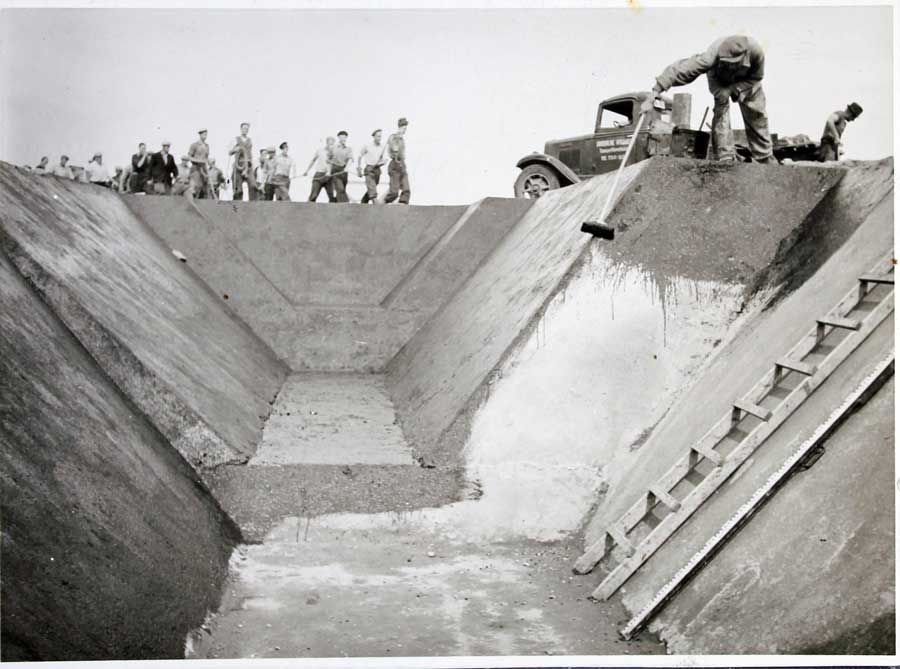Organization Todt and forced labor in Norway 1940 – 1945
the Atlantic seawall
Photo: Riksarkivet, RAFA3309_U47, photographer: unknown
The construction of submarine bunkers, coastal forts and heavy batteries began after the occupation of France, and was greatly expanded in 1942. During just over two years, OT cast over fifteen thousand concrete structures. The workforce was around 300,000 men, most of them forced labourers.
OT's concrete-cast defense line was unable to withstand the Allied invasion force in Normandy, France on "D-Day", 6 June 1944. In the landscape, the scars of the battles are still clearly visible today.
Photo: Romsdalsmuseet, photographer: unknown
Fortress Norway
The Norwegian part of the Atlantic Wall stretches along a 10,000 kilometer coastline and consists of firing positions, coastal forts and heavy batteries. The facilities are often referred to as Festung Norwegen and were OT's largest construction project in Norway. Particular prestige was attached to the construction of a total of seven heavy batteries, equipped with the largest cannons of the time. Battery Vara at Kristiansand was the most southerly, while Battery Peter at Kirkenes, furthest north, is located on what is today Russian territory. Batteries Theo and Dietel guarded the entrance to Narvik, while Battery Otto at Ørland controlled the Trondheimsfjord. The batteries Felix and Nero respectively covered the waters around Bergen and the Oslofjord.

Photo: Riksarkivet, RAFA3309_U47, photographer: unknown
Forgotten graves
A large number of Soviet prisoners of war were used to build the batteries. While the death toll was relatively low in the south, the conditions in some places in northern Norway were catastrophic. During the construction of Theo and Dietel at Narvik, over 1,100 prisoners died.
In a forest clearing near Vardås on Nøtterøy, close to Battery Nero, these grave monuments stand. Two Soviet prisoners of war working for OT were originally buried here - Alexandr Yegorovitch Kravchenko and Demjan Puschnjak. Both were Ukrainians and soldiers in the Red Army. Fellow prisoners erected the monuments when the war was over.
In the early 1950s, during the Cold War, the graves were opened and the remains moved to a central cemetery in Oslo. Now the threat was no longer Nazi Germany, but the communist Soviet Union. The Norwegian authorities feared that Soviet agents would pose as the prisoners' relatives and use the graves as a starting point for espionage.
Photo: NTM, photographer: Håkon Bergseth

